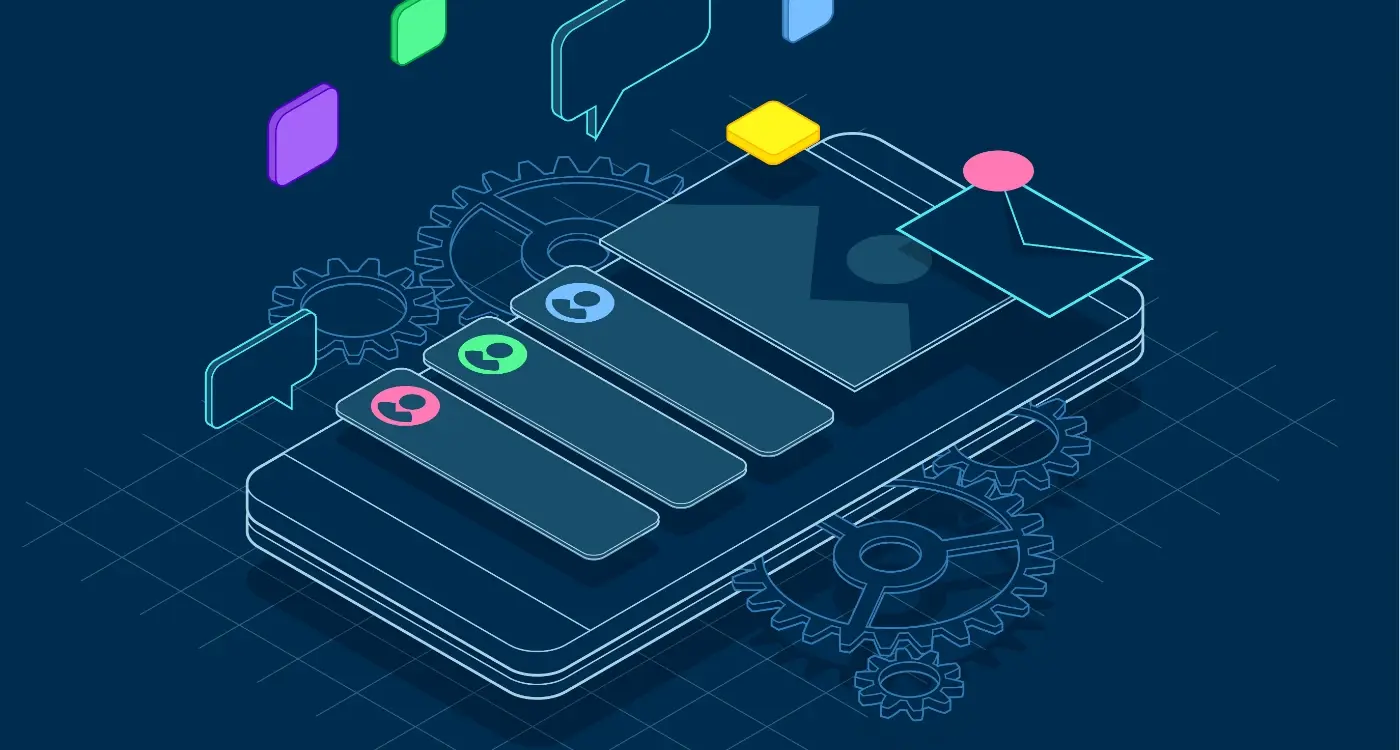Which App Costs Can You Plan For?
Every business owner knows that horrible sinking feeling when app development costs spiral completely out of control. You start with what seems like a reasonable budget, then suddenly you're hit with unexpected expenses that nobody mentioned in the initial planning phase. Its like watching your bank balance disappear while you're powerless to stop it—and honestly, it happens more often than most agencies would care to admit.
After building hundreds of apps over the years, I've seen this scenario play out countless times. The thing is, most app costs are actually quite predictable if you know what to look for. Sure, there will always be some surprises along the way (thats just the nature of software development), but the majority of expenses can be planned for and budgeted accordingly. The key is understanding which costs are foreseeable and which ones might catch you off guard.
The biggest mistake I see businesses make is treating app development like buying a car—you pay once and drive away. Apps are more like owning a house; the initial purchase is just the beginning of your financial commitment.
What we're going to cover in this guide are the predictable app costs that every business should factor into their budget planning from day one. From initial development through ongoing maintenance, marketing, and those pesky third-party service fees that can add up quickly. By the end, you'll have a clear picture of what expenses you can plan for—and more importantly, how to budget for them properly so you dont get any nasty surprises down the road.
Initial Development Costs
Right, let's talk about the big one—what you'll actually pay to get your app built from scratch. This is where most people get their first shock, because app development isn't cheap. But here's the thing, it doesn't have to break the bank if you plan properly.
The cost of building an app depends on a few key factors that I always discuss with clients upfront. How complex is your app? A simple utility app with basic features will cost far less than something with real-time chat, payment processing, and AI recommendations. Are you building for iOS, Android, or both? And here's where many people trip up—do you need custom backend development or can you use existing services?
What Goes Into Development Costs
- UI/UX design and wireframing
- Frontend development (what users see and interact with)
- Backend development (servers, databases, APIs)
- Quality assurance and testing
- Project management and communication
- App store preparation and submission
You know what? I've seen people budget £5,000 for what's essentially a £25,000 project. It's not their fault—there's a lot of confusion out there about what app development actually involves. A simple app might cost anywhere from £10,000 to £30,000, while something more complex could easily hit £50,000 to £150,000 or more.
The good news is that you can control these costs by being smart about your initial feature set. I always recommend starting with what we call an MVP—minimum viable product. Build the core features first, launch, get feedback, then add the bells and whistles later. It's much cheaper than trying to build everything at once, and you'll learn what your users actually want instead of guessing.
Ongoing Maintenance Expenses
Right, let's talk about the costs that keep showing up long after your app goes live. I've seen too many clients budget perfectly for development and then get caught off guard by ongoing expenses—it's honestly one of the biggest mistakes in app budget planning.
Your app isn't a car that you buy once and drive for years. It's more like a living thing that needs constant care. Operating systems update regularly (iOS and Android release major updates annually), and your app needs to stay compatible. Miss a few updates and suddenly your app starts crashing on newer devices. Not good.
Bug fixes are another predictable app cost that catches people out. Even the best-built apps develop issues over time. Users find edge cases, new devices behave differently, or third-party services change their APIs. I typically budget around 15-20% of the original development cost annually for maintenance and updates.
The Big Maintenance Categories
- OS compatibility updates (2-3 times per year)
- Bug fixes and performance improvements
- Security patches and updates
- Server and database maintenance
- Content management and updates
- Analytics and monitoring tools
Then there's feature updates. Users expect apps to evolve, and your competitors aren't standing still. I usually see clients spending another 10-15% of their original budget on new features each year just to stay competitive.
Set aside 25-35% of your original development budget annually for maintenance, updates, and gradual improvements. This might seem high, but it's far cheaper than rebuilding from scratch when your app becomes outdated.
The good news? These are genuinely foreseeable app expenses. You can plan for them, budget for them, and avoid nasty surprises. Just don't pretend they won't happen—because they will.
Marketing and User Acquisition
Here's where things get expensive quickly—and I mean really expensive. When clients first come to me, they often think the hard part is building the app. Actually, getting people to download it and use it? That's where the real challenge begins.
User acquisition costs have gone through the roof over the past few years. We're talking anywhere from £2 to £10 per install depending on your industry and target audience. Finance and gaming apps? You'll be paying top dollar. A simple productivity app might cost less, but you're still looking at significant spend to get decent numbers.
The Reality of App Store Competition
Getting organic downloads is bloody difficult these days. There are millions of apps out there, and the app stores aren't doing you any favours with their algorithms. You need a proper marketing strategy from day one—not something you think about after launch.
Most successful apps I've worked on spend 30-50% of their total budget on marketing and user acquisition. That's not a typo. If you've got £50,000 for your entire project, expect to spend £15,000-25,000 just on getting people to know your app exists.
What You'll Actually Spend Money On
- Paid advertising (Facebook, Google, Apple Search Ads)
- App store optimisation tools and consultancy
- Influencer partnerships or sponsored content
- PR and media outreach
- Content creation for social media
- Analytics and tracking tools
- A/B testing different marketing approaches
The mistake I see constantly? People launch their app and then start thinking about marketing. By then, you're already behind. Plan your marketing budget before you write a single line of code, because without users, even the best app in the world is just expensive digital art that nobody will ever see.
Third-Party Service Fees
When you're building an app, you'll inevitably rely on third-party services—and these costs are actually pretty predictable once you know what to look for. I mean, most apps today don't exist in isolation; they need payment processing, push notifications, analytics, cloud storage, and often much more.
The good news? These services usually have transparent pricing models. Take Stripe for payment processing—they charge 1.4% + 20p per transaction in the UK, plus their standard fees. Firebase for backend services has clear pricing tiers based on usage. SendGrid for email services, Twilio for SMS, even services like Mapbox for mapping—they all publish their rates upfront.
Planning Your Service Budget
Here's what I tell clients: start by listing every service your app needs, then research their pricing structures. Most follow usage-based models, so you can estimate costs based on your projected user numbers. If you're expecting 10,000 active users, you can calculate roughly how many push notifications you'll send, how much data you'll store, how many API calls you'll make.
The biggest mistake I see is underestimating how quickly third-party costs can add up as your app grows—what starts as £50 per month can easily become £500 when you hit scale.
Some services offer generous free tiers that work well for testing and early stages. But don't get caught out when you suddenly need to upgrade. I always recommend budgeting for at least the next pricing tier up from what you think you'll need. Better to overestimate these foreseeable app expenses than get hit with surprise bills when your app takes off.
The key is treating third-party services as predictable app costs from day one. Build them into your budget planning, monitor usage regularly, and you'll avoid any nasty surprises down the line.
Right, let's talk about something that catches a lot of people off guard—what the app stores actually take from your revenue. And trust me, its more than you might think!
Apple and Google both take a 30% cut of all app sales and in-app purchases. Yep, you read that right. Thirty percent. So if someone buys your £10 app, you're getting £7. If they make a £5 in-app purchase, you pocket £3.50. It's a substantial chunk, and honestly, it can be quite shocking when you first see those revenue reports come through.
There's a small bit of good news though—both stores have introduced reduced rates for smaller developers. Apple's Small Business Program drops the commission to 15% if you make less than £1 million per year. Google Play has a similar deal, giving you 15% on your first £1 million in annual revenue. But here's the thing: these programmes have specific terms and conditions that can change, so you need to stay on top of them.
What really gets people is that this 30% comes out automatically. There's no invoice, no negotiation—it just disappears before you even see it. I've had clients who built their entire business model around gross revenue figures, forgetting about this fee entirely. That's a recipe for cash flow problems.
You also can't avoid these fees by directing users to pay elsewhere—both Apple and Google have strict rules about that. Try to circumvent their payment systems and you'll find yourself kicked out of the store faster than you can say "alternative payment method." The app stores are serious about protecting their revenue streams, and rightfully so—they're providing the platform, the payment processing, and the customer base.
The key is building these costs into your financial planning from day one. Don't treat them as an afterthought.
Legal and Compliance Costs
Legal costs are one of those app expenses that catch people off guard, but they're actually quite predictable once you know what to look for. I mean, every app needs terms of service and a privacy policy—there's no getting around that. You're looking at roughly £500-1,500 for basic legal documents if you use a solicitor, though template services can bring this down to £100-300.
GDPR compliance is another big one, especially if you're targeting European users. The regulations are pretty clear about what you need to do; it's just a matter of implementing the right data handling processes and consent mechanisms. Budget around £1,000-3,000 for proper GDPR compliance setup, depending on how complex your data collection is.
If you're in regulated industries like healthcare or finance, your compliance costs jump significantly. We've worked on fintech apps where regulatory compliance alone cost £15,000-50,000 upfront. But here's the thing—these costs are predictable because the regulations are published and clear. You know exactly what boxes need ticking.
App store compliance is fairly straightforward too. Apple and Google publish their guidelines, and whilst they do change them occasionally, the core requirements stay pretty consistent. Content rating, age verification, data usage declarations—all standard stuff that any experienced developer can handle.
Trademark searches and intellectual property protection typically run £500-2,000 depending on how many territories you want to cover. It's not legally required, but it's sensible business practice that can save you headaches later.
Get your legal documents sorted early in development, not as an afterthought. Privacy policies need to be accurate to your actual data practices, which means your lawyer needs to understand exactly how your app works.
Infrastructure and Hosting
When clients ask me about hosting costs for their mobile app, I often see their eyes glaze over a bit—it's one of those technical areas that feels abstract until you're actually paying the bills each month. But here's the thing: your hosting infrastructure is basically the engine room of your app, and getting it wrong can be expensive in more ways than one.
Most apps start small. You might spend £20-50 per month on basic cloud hosting when you first launch. That sounds reasonable, right? But as your user base grows, so do your server costs—and this scaling can catch people off guard. I've seen apps go from £50 to £500 monthly hosting costs almost overnight when they hit a growth spike.
What Drives Your Hosting Costs
The main factors that affect your monthly bills are pretty straightforward: how many people use your app, how much data they're uploading or downloading, and how complex your backend operations are. A simple news app might cost £30 monthly to host for thousands of users, while a photo-sharing app with the same user base could easily cost £300 because of all that image processing and storage.
- Basic hosting for simple apps: £20-100 per month
- Medium complexity apps with databases: £100-500 per month
- High-traffic apps with media content: £500-2000+ per month
- Enterprise-level apps: £2000-10000+ per month
Content delivery networks (CDNs) add another layer of cost but they're often worth it—they make your app faster for users around the world. Database hosting, backup services, monitoring tools... it all adds up. The good news? Most of these costs scale with success, so you're only paying more when your app is actually making more money.
Right, let's wrap this up then. After building apps for nearly a decade, one thing I can tell you with absolute certainty is that predictable app costs aren't just nice to have—they're the difference between a project that succeeds and one that runs out of money halfway through. You know what I mean?
The good news? Most of your app expenses fall into categories you can actually plan for. Your initial development costs, ongoing maintenance, app store fees, basic infrastructure, third-party services—these aren't mysteries. Sure, the exact numbers will vary based on your specific needs, but you can get pretty close estimates if you do your homework properly.
But here's the thing that catches people out every single time: it's not the predictable costs that kill app projects, it's the ones they didn't think about. I've seen brilliant apps fail because nobody budgeted for proper user acquisition. Or because they forgot about compliance costs when expanding to new markets. Actually, the legal stuff trips up more people than you'd think.
My advice? When you're doing your app budget planning, add at least 20-30% on top of your foreseeable app expenses. That buffer isn't pessimism—it's realism based on years of watching projects go over budget for perfectly valid reasons. Maybe you'll need extra security features. Maybe Apple changes their guidelines. Maybe your app becomes popular faster than expected and you need to scale quickly.
The apps that succeed long-term are built by teams who understand that budgeting isn't just about the money you can see coming—it's about preparing for the opportunities and challenges you can't.
Share this
Subscribe To Our Learning Centre
You May Also Like
These Related Guides

How Do You Estimate Real Costs Before App Development?

How Much Does It Really Cost to Develop an App?



